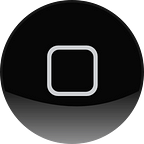To Be, or Notch to Be?
Interrogating the iPhone X’s software design
Two weeks ago, Apple revealed the highly-anticipated iPhone X to the world. It is the first iPhone to feature an OLED screen, Face ID and augmented reality capabilities in both cameras. However, its most-discussed trait by far has been the “notch” housing the front-facing camera and AR sensors required for Face ID. Rather than add to the list of hot takes on the matter, I seek to provoke thought on it through the following questions:
- Why emphasise the “all screen” aspect if it is apparently unimportant?
- If “all screen” is so important, why draw attention to the non-screen part with iOS’ bleed-through status bar design?
- Similarly, why stop making the white iPhone face — if not to keep the screen as uniform as possible?
- If for brand differentiation, why not simply show the bleed status bar on the home and lock screens (much like Springboard has become iconic in its own right), while at least having it black inside apps to keep the focus on the software experience?
- Regardless, is brand differentiation a good enough reason for the hardware to draw attention to itself by intruding on and detracting from the software?
- If Jony Ive “has expressed a desire for the iPhone to appear like a single sheet of glass for years”, why not redesign iOS for that, as well as to better suit the realities of OLED?
- Is the current UI design optimal for the iPhone X?
- Finally, do you notice what Jony Ive emphasises in describing Steve Jobs’ final product?
The face of the product is pretty much defined by a single piece of multitouch glass, and that’s it. There is no pointing device…I don’t have to change myself to fit the product; it fits me.
You can follow me on Twitter:
